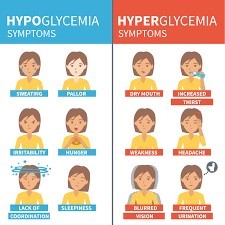A nurse on an inpatient mental health unit is monitoring a visit between a client who has a history of aggressive behavior and the client's partner. Which of the following observations should the nurse identify as an indication for potential violence?
The client is taking numerous deep, measured breaths
The client is calmly telling their partner that "the staff here is so controlling
The client is sitting with their head in their hands and appears to be crying
The client is pacing around the chair in which their partner is sitting
The Correct Answer is D
The client is pacing around the chair in which their partner is sitting.
Rationale:
- A. The client is taking numerous deep, measured breaths. This is not an indication of potential violence, but rather a coping strategy to calm down and regulate emotions.
- B. The client is calmly telling their partner that "the staff here is so controlling." This is not an indication of potential violence, but rather a expression of frustration or dissatisfaction with the treatment setting.
- C. The client is sitting with their head in their hands and appears to be crying. This is not an indication of potential violence, but rather a sign of sadness or distress.
- D. The client is pacing around the chair in which their partner is sitting. This is an indication of potential violence, as it shows restlessness, agitation, and possible intimidation of the partner.
Nursing Test Bank
Naxlex Comprehensive Predictor Exams
Related Questions
Correct Answer is A
Explanation
Irritability.

The rationale for each choice is as follows:
- A. Irritability: Correct. Irritability is one of the signs of hypoglycemia, which occurs when blood glucose levels fall below 70 mg/dL (3.9 mmol/L). Other signs include shakiness, sweating, hunger, headache, confusion, and blurred vision.
- B. Increased urination: Incorrect. Increased urination is one of the signs of hyperglycemia, which occurs when blood glucose levels rise above 180 mg/dL (10 mmol/L). Other signs include thirst, dry mouth, fatigue, nausea, and fruity breath odor.
- C. Vomiting: Incorrect. Vomiting is not a specific sign of hypoglycemia or hyperglycemia, but it can occur as a complication of either condition if left untreated or poorly managed.
- D.Facial flushing: Incorrect. Facial flushing is not a sign of hypoglycemia or hyperglycemia, but it can occur as a side effect of some medications used to treat diabetes, such as niacin or rosiglitazone.
Correct Answer is D
Explanation
The client is pacing around the chair in which their partner is sitting.
Rationale:
- A. The client is taking numerous deep, measured breaths. This is not an indication of potential violence, but rather a coping strategy to calm down and regulate emotions.
- B. The client is calmly telling their partner that "the staff here is so controlling." This is not an indication of potential violence, but rather a expression of frustration or dissatisfaction with the treatment setting.
- C. The client is sitting with their head in their hands and appears to be crying. This is not an indication of potential violence, but rather a sign of sadness or distress.
- D. The client is pacing around the chair in which their partner is sitting. This is an indication of potential violence, as it shows restlessness, agitation, and possible intimidation of the partner.
Whether you are a student looking to ace your exams or a practicing nurse seeking to enhance your expertise , our nursing education contents will empower you with the confidence and competence to make a difference in the lives of patients and become a respected leader in the healthcare field.
Visit Naxlex, invest in your future and unlock endless possibilities with our unparalleled nursing education contents today
Report Wrong Answer on the Current Question
Do you disagree with the answer? If yes, what is your expected answer? Explain.
Kindly be descriptive with the issue you are facing.
